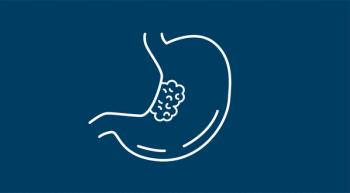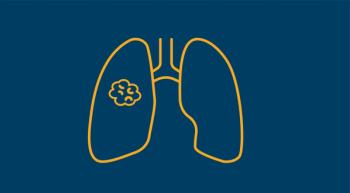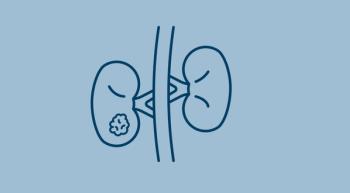
Lindsay Diamond, MSN, AGNP-C, AOCNP, unpacks the significance of recent advances in the bladder cancer space.

Lindsay Diamond, MSN, AGNP-C, AOCNP, unpacks the significance of recent advances in the bladder cancer space.

FDA has approved the BRAF/MEK combination of dabrafenib plus trametinib for pediatric BRAF V600E–mutant low-grade glioma. The label comes with a warning for pyrexia.

Linh Nguyen BSN, RN, OCN, BMTCN, highlights the benefits of prospective toxicity data collection for patients undergoing bone marrow transplantation.

Courtney R. Arn, APRN-CNP, discusses the recent approval of dostarlimab for patients with mismatch repair–deficient recurrent or advanced endometrial cancer.

In this episode of The Vitals, Stephanie Jackson, DNP, MSN, RN, AOCNS, BMTCN, discusses the treatment journey of a patient who required multiple lines of therapy for ALL.

Patients with prostate cancer experienced prostate cancer-specific mortality at a low rate regardless of assigned treatment.

Nurse researchers sought to improve the communication between the hematopoietic stem cell transplantation care team and pediatric patient caregivers.

The addition of AB011 to chemotherapy yielded initial clinical responses in patients with gastric cancer or gastroesophageal junction adenocarcinoma.

Kathleen Lutz, RN, NP-BC WH, weighs in on the recent approval of mirvetuximab soravtansine-gynx for patients with folate receptor alpha (Frα)-positive, platinum-resistant ovarian cancer.

Patricia Jakel, RN, MN, AOCN discusses adverse event management in the age of new breast cancer treatments.

Patients with stage IB, II, or IIIA, EGFR-mutated non–small cell lung cancer derived benefit with adjuvant osimertinib.

Lasofoxifene may be helpful in managing vaginal/vulvar symptoms in women with estrogen receptor–positive/HER2-negative breast cancer harboring an ESR1 mutation.

During the 2023 Tandem Meeting, Trista Carelock RN, BSN, ONC, BMT-CN, highlighted how her institution leveraged remote patient monitoring to offer outpatient CAR T-cell therapy to patients.

The FDA’s Oncologic Drugs Advisory Committee voted 11 to 2 in support of the benefit-risk profile displayed by polatuzumab vedotin-piiq in patients with previously untreated large B-cell lymphoma, including diffuse large B-cell lymphoma not otherwise specified.

We can help our patients feel supported is by providing them with clear information about their treatment plan and what to expect. By doing so, we empower them to take control of their own health.

After 6 months of treatment with ruxolitinib, patients with polycythemia vera experienced a significant reduction in hematocrit levels compared with baseline.

La-Urshalar Brock, MSN, FNP-BC, CNM, discusses HER2 status and its implications for patients with breast cancer.

The approval of the Udenyca autoinjector offers easy-to-use design for delivery of the biosimilar pegfilgrastim-cbqv.

Data from a retrospective analysis confirm the benefit of palbociclib plus an aromatase inhibitor in elderly patients with hormone receptor–positive, HER2-negative advanced/metastatic breast cancer.

Leslie Smith, DNP, RN, APRN-CNS, BMTCN, AOCNS, highlights the pirtobrutinib approval for mantle cell lymphoma, and what she anticipates will encompass best nursing practices with the newly approved agent.

Terri Pollack, DNP, APRN, FNP-C, PMHNP-BC, discusses key data that may affect clinical practice for nurses from the 2023 GI Cancers Symposium.

In both the KEYNOTE-641 and KEYNOTE-789 trials, pembrolizumab, in addition to standard therapies, did not improve survival outcomes in their target populations.

A combination of immune checkpoint inhibitor and MET-targeted therapy led to high responses in patients with MET-driven papillary renal cancer, although the regimen missed its primary end point.

Abemaciclib, in combination with endocrine therapy, had been approved as an adjuvant treatment for patients with high-risk, hormone receptor–positive, HER2-negative, node-positive, early breast cancer.

Circulating tumor DNA can be an effective biomarker that allows for assessments of early response.

At the 2023 Tandem Meeting, Jennifer Peterson, MS, RN, OCN, BMTCN, discussed how her institution implemented a successful outpatient CAR T-cell therapy program.

Sarah Donahue, MPH, AOCNP, cochair of the 40th Annual Miami Breast Cancer Conference nursing track, discusses the biggest updates in breast cancer from 2022.

Pure essential oils reduced the severity of chemotherapy-induced nausea and vomiting in patients receiving autologous blood and marrow transplants.

Each month, Oncology Nursing News® takes a look back at our most popular stories.

The New Drug Application for nirogacestat has been granted priority review for the treatment of adult patients with desmoid tumors.